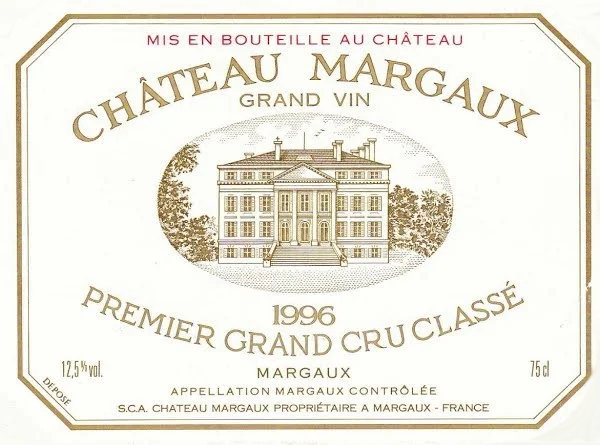Château Margaux 2018
Review of the Estate
Château Margaux is known for producing some of the silkiest, most aromatic wines in Bordeaux and it has been famous for doing so for centuries. The origins of the estate may be traced back to the 15th century when the Lestonnac family took over a grain growing property known as Lamothe (deriving from la motte - meaning a small rise in the land, or hill). The agricultural change from cereal crops to vines was led by Pierre de Lestonnac from 1572 to 1582. Further developments occurred when, over a century later, Chateau Margaux estate manager, Monsieur Berlon, saw the benefits of vinifying red and white grapes separately. This change was what set Chateau Margaux firmly on the path to modern vinification practices and international renown.
This reputation spread over the next several hundred years. Sir Robert Walpole, the English Prime Minister in the early 18th Century, declared himself an avid supporter of Chateau Margaux and was known to purchase four casks every three months! When the Marquis de la Colonilla purchased the estate in the early 19th century, the outstanding reputation of Chateua Margaux's wines demanded an impressive chateau to match. Built in 1810 by Louis Combes, the current chateau is a unique example of the neo-classical style. With its structured facade, balanced by ionic columns, it exudes a refined elegance not dissimilar to that of the wines produced within. Chateau Margaux was officially recognised as an historic monument in 1946.
Today Chateau Margaux is owned by Corinne Mentzelopoulos. Her father, Andrè, purchased the estate in 1977 and invested significantly in the regeneration of the vineyard and winery by installing new drainage systems, replanting vines, creating a new underground cellar and investing in new oak barrels. The result of these improvements is evident in the spectacular and consistent vintages produced by Chateau Margaux since the 1978 vintage. This has allowed Chateau Margaux to remain a dominant force in a highly competitive market and maintain its preeminent global reputation.

Vineyard
Surface area: 192.7 acres
Grape Varieties: 75% Cabernet Sauvignon, 20% Merlot, 5% Cabernet Franc and Petit Verdot
Average age of vines: 35 years
Density of plantation: 10,00 vines per hectare
Average yields: 45 hectoliters per hectare
Average cases produced: 16,500 per year
Plateau of maturity: 9 - 35 years
Château Margaux 2018 Reviews / Tasting Notes
Lisa Perrotti-Brown - The Wine Advocate
Point Score: 100
The 2018 Chateau Margaux is composed of 90% Cabernet Sauvignon, 4% Merlot, 4% Cabernet Franc and 2% Petit Verdot, representing 36% of the crop this year. The wine has a pH of 3.8 and 14% alcohol. Deep purple-black in color, it slowly unfurls to reveal tantalizing scents of creme de cassis, wild blueberries and Black Forest cake with hints of redcurrant jelly, rose oil, dark chocolate and cedar chest plus a touch of star anise. The medium to full-bodied palate bursts with opulent black fruit, fragrant earth and floral layers, supported by a rock-solid structure of exquisitely ripe, finely grained tannins and seamless backbone of freshness, finishing with fantastic length. This is classic Margaux at its most seductive, although it is, rather amazingly, approachable and absolutely delicious right now. But, to enjoy its full glory, you will want to cellar it for at least 6-8 years and then watch it metamorphize over the next 40+ years.
Wine Spectator
Point Score: 98
This is extremely powerful, with high tannin levels that are beautifully velvety and a real presence that is going to need a good 15 years before it softens. There are layers and layers of subtlety here, charcoal, earth, fresh acidity - a ton of serious character that needs time to inch towards opening. Grips on like a limpet - this needs a good half an hour in the glass to even begin to open, but as it does so you see clearly the finesse and precision of the fruit construction. Exceptionally good. 3.64pH, 2% Petit Verdot completes the blend, 36% of the harvest in the first wine. Bottled mid-September.
James Suckling
Point Score: 100
So much ash, tobacco and earth to the bright blackberry and currant aromas. Flowers too. Fresh. Full-bodied with seamless tannins that spread across your palate and caress every square centimeter. It's shows loads of ripe-berry, cherry, currant and chocolate character, as well as walnut and light cedar. Then the finish goes on for minutes . Extremely refined and elegant, despite the structure. 90% cabernet sauvignon, 4% cabernet franc, 4% merlto and 2% petit verdot. A joy to taste, but drink after 2025.